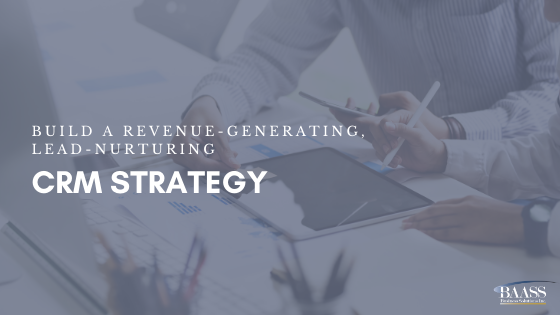Companies that excel at lead nurturing see a better return on their marketing investment. A survey from Forrester Research indicates that companies who become masters at lead nurturing, close sales 50% more often and at 33% lower cost than those who do not develop a strong lead nurturing strategy.
Consider how much your company invests into customer acquisition today. The act of acquiring leads may account for a large portion of your budget. But what do you do with those leads once they are in your CRM system?
Lead nurturing is the art and science of providing buyers with information so that they get to know, like and trust your business. Responding to your advertisement or another offer is just the first step in a sales process. The more involved the decision-making process and the higher the price of the item, the longer the typical sales cycle. Lead nurturing keeps in touch and provides useful, relevant information to help customers move from mildly interested to purchasing the product or service.
Developing Your Lead Nurturing Strategy
Most CRM systems connect with multiple social media and communications portals. This makes it easy to send messages out to potential customers. A typical lead nurturing strategy, for example, uses emails sent to customers at weekly, biweekly or monthly intervals, each building up to the call to action to buy the product.
To develop your own effective lead nurturing sequence, follow these steps:
- Identify the need behind the lead
Customers connect with your company because they have a problem they wish to solve or an unfilled need. Needs may be factual (“I need more warehouse space”) or emotional (“I need to feel beautiful again.”) The first step to creating an effective lead nurturing sequence is to identify the underlying need behind the lead. Once you understand why people are interested in your products, you can move on to the next step in the lead nurturing sequence. - Research solutions
Your company offers a potential solution – or the lead wouldn’t be in your system! But how does your solution match again the customers’ needs? And how does your solution stack up against the competitors’ solutions? Brainstorm potential needs and solutions that your product or service provides. You will build messages out from this list. - Select the best ones
Select the customer needs and solutions from your list that you feel are the most appealing. - Create your message sequence
Messages sent from your CRM auto responder should include a reminder of why the customer is on your list (so they don’t think the message is spam), an introduction to who you are and how you help them, and the needs and solutions you’ve identified in step 3. Emails should be written in a conversational, succinct manner, and follow a logical sequence. Early in the sequence you can begin asking for the sale, but wait until the last anticipated email to be more direct and ask for an action.
Learn More: Project Time Management and Sage CRM - Include reasons to buy
When you can match problems to solutions, you’ve already helped people see a reason to buy. Don’t forget to include reasons to buy from your company. Customers are inundated with offers. Make sure that your company remains top of mind by highlighting the benefits of purchasing from your company over others.
A lead nurturing sequence is a valuable investment in your sales cycle. An effective lead nurturing sequence becomes apparent by the number of sales closed at the end of the sequence. If the sequence isn’t performing adequately, review your messages and timing, and test new options. The proof of success is in the numbers.
BAASS offers insight, support, and information to companies seeking CRM systems. We can help you choose from among many good CRM systems to find the right fit for your needs. For more information, visit our CRM page.
Check out this blog on 6 Ways to Leverage your CRM Solution
Read through our most trending blogs:
- Benefits Of Upgrading Software
- Erp Software Vancouver
- How Erp Works in An Organization
- Reduce Manual Data Entry
- Outgrowing Your Accounting Software
- Sage 300 Erp Intelligence Reporting
- Cloud Accounting Vs Traditional Accounting
- Is Virtualization Necessary for Cloud Computing
- What Is Sage X3 System
- What Is WMS System
- How To Network at A Networking Event
- WMS Solutions for Sage 300
- What Is an Erp Software Solution
- Sage 300 Intelligence Reporting
- What Is Infrastructure Security in Cloud Computing
- How Does Cloud ERP Work
- What Is ERP System
- Sage 300 System Requirements

